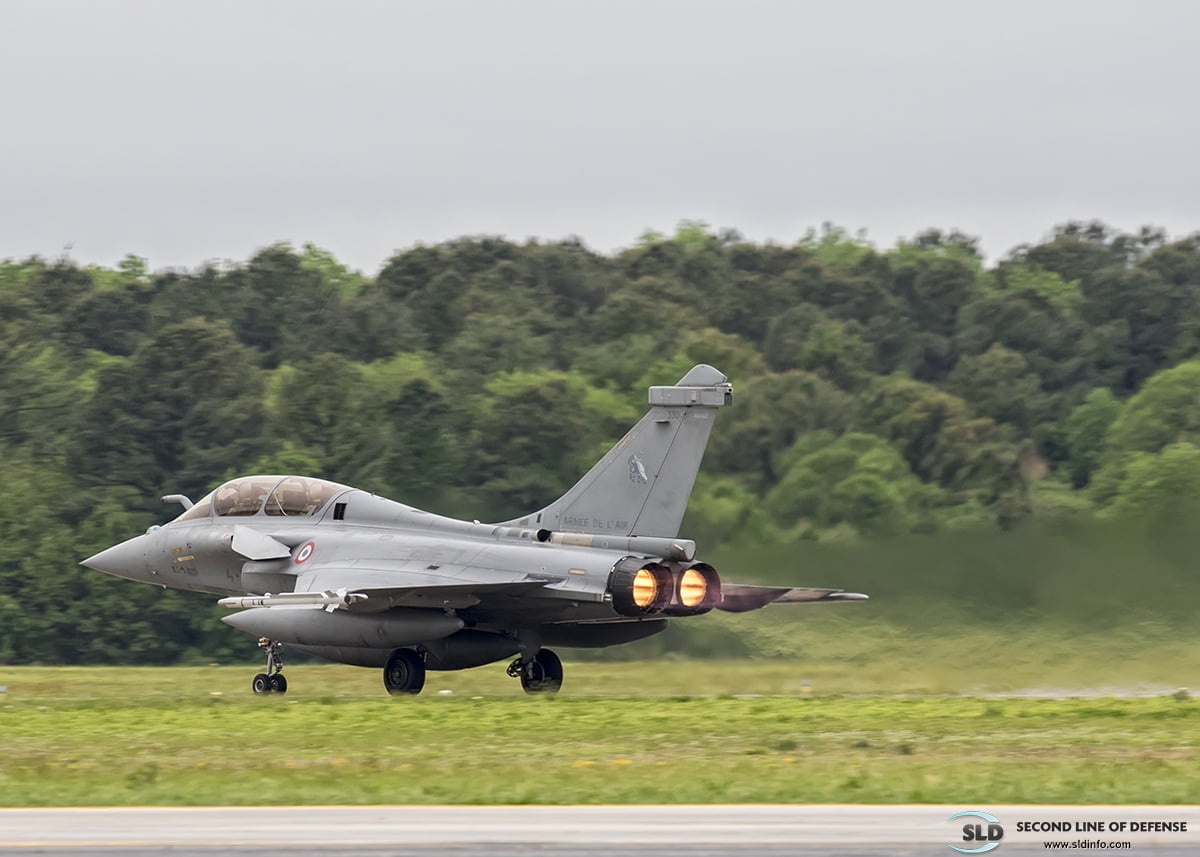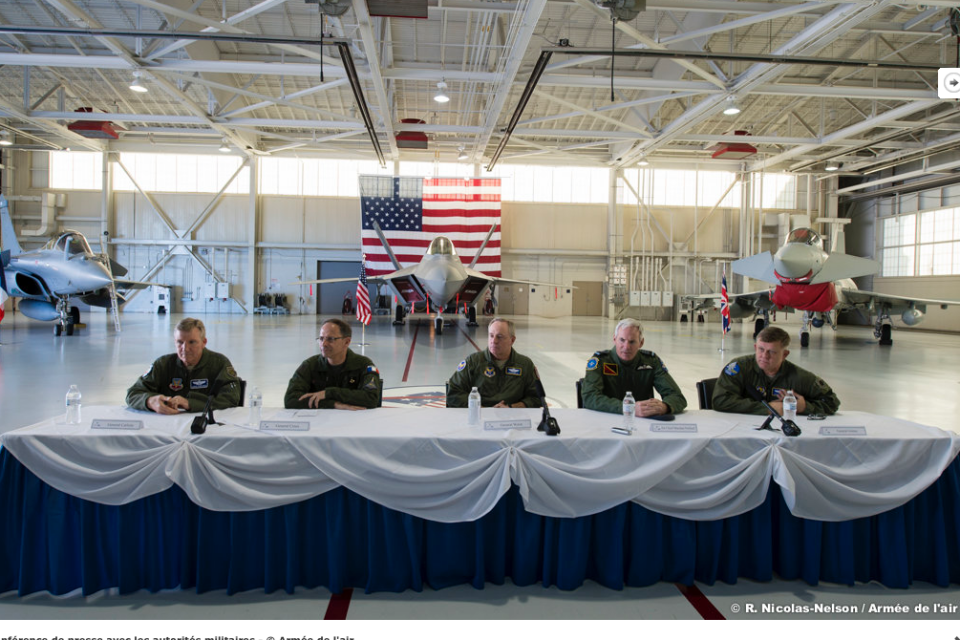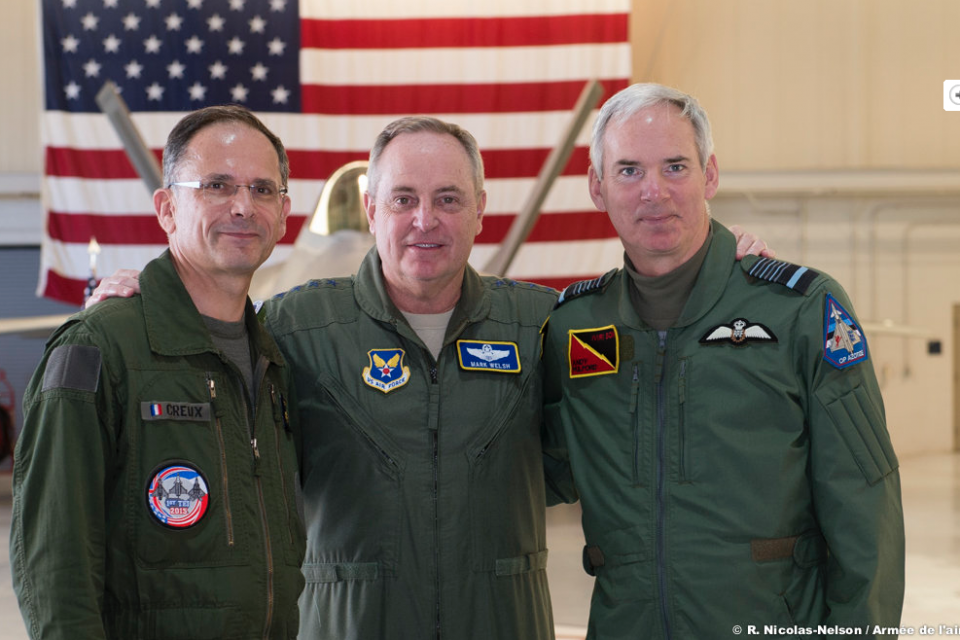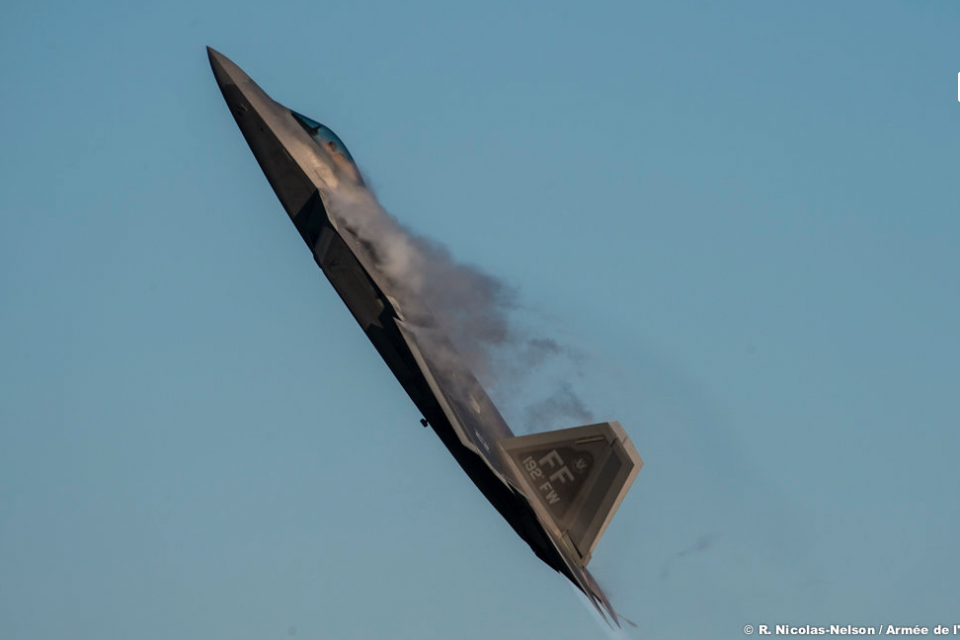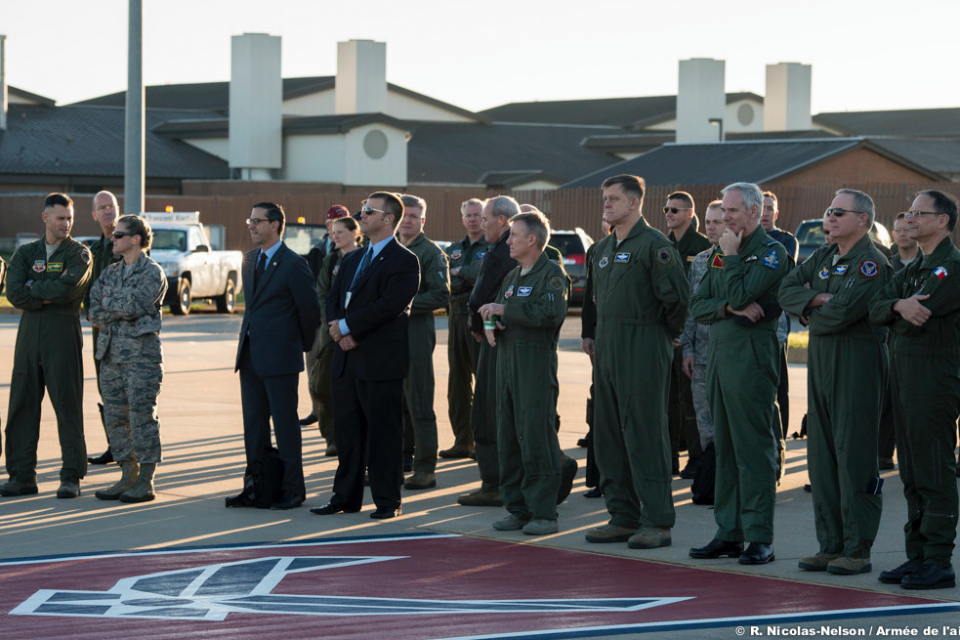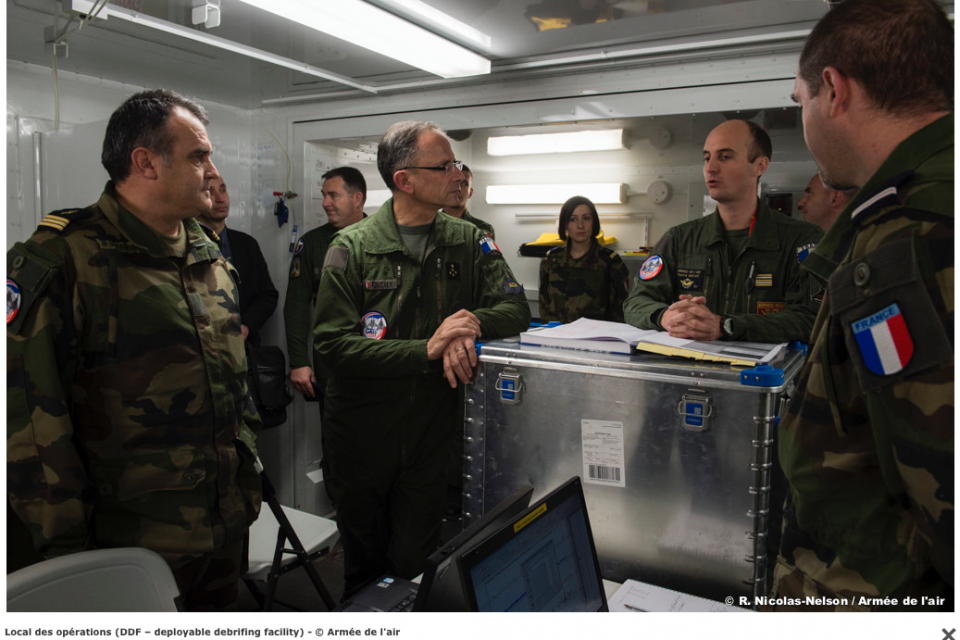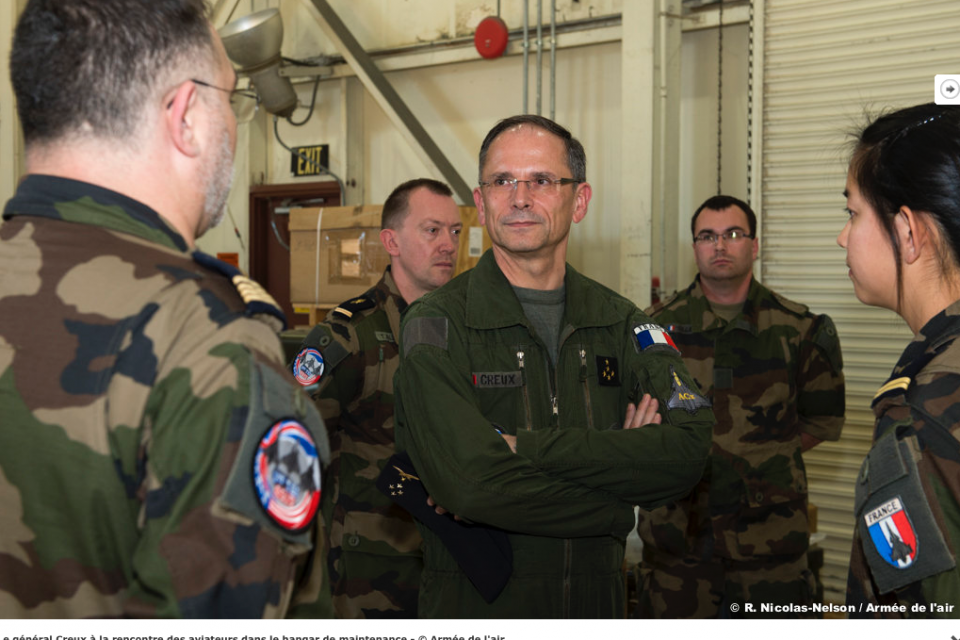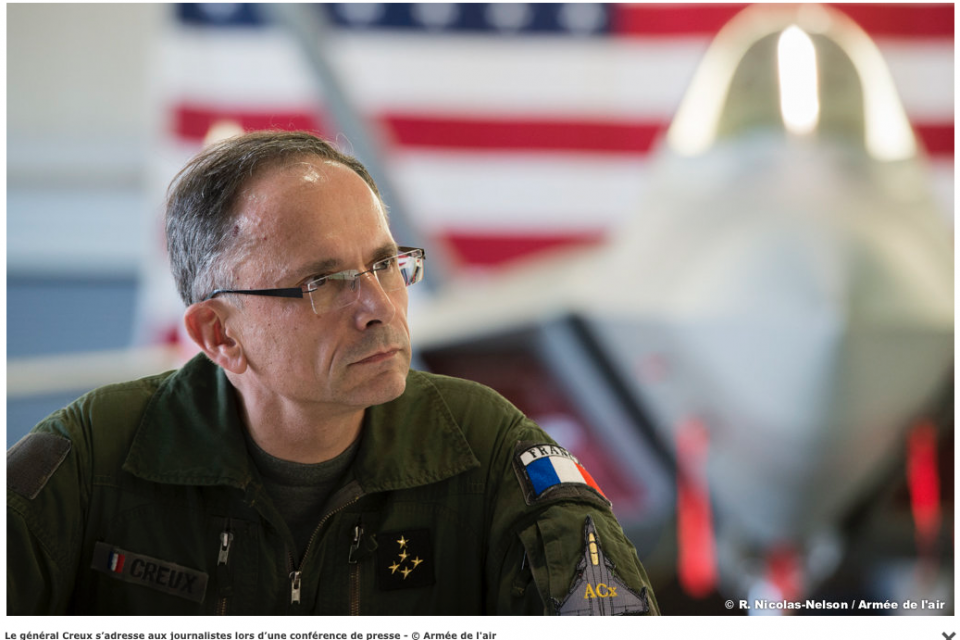2017-05-04 The first trilateral exercise involving fifth generation aircraft with Typhoons and Rafales was held in December 2015.
In a piece published on the French Air Force website on December 16, 2015, a brief overview of the exercise was provided.
According to General Creux: “the key challenge was to get our most modern aircraft to work together and to develop tactics together and the have strengthened their confidence in one another.”
After the briefing, General Creux met with French aviators in their work area and discussed the operation with them.
“Our aviators learned a lot from the exercise and have had a very good experience.”
http://www.defense.gouv.fr/air/actus-air/exercice-tei-rencontre-au-sommet-sur-la-base-de-langley
And In a separate discussion with a senior RAF pilot, the importance of working the skills for higher end combat was crucial and the involvement of the French Air Force very important.
“The eyes of the French Air Force was clearly opened with regard to the F-22 and fifth generation, and they themselves have much to contribute with their battle hardened combat capability and their latest generation aircraft.”
For this British combat pilot, the key for working the fifth generation with other aircraft was the ability of the former to provide for more survivability and lethality and with the legacy aircraft providing significant payloads to the fight.
https://sldinfo.com/french-participation-in-the-trilateral-exercise-updated-with-an-raf-discussion/
The trilateral experience has been continued and updated with the recently completed Atlantic Trident Exercise also held at Langley Air Force Base from April 12-28 2017.
This exercise was marked by the enhanced participation of fifth generation aircraft with F-35s from Eglin AFB engaged along with the F-22s, Typhoons and Rafales.
According to an article published on the French Air Force website, the exercise began with working through Basic Fighting Maneuvers (BFM) among the four aircraft before transitioning to the core function of the exercise, which was shaping new tactics shaped by 4th and 5th generation air integration.
According to General Éric Charpentier, the Director of the French force engaged in the exercise and the Commander of the Rafale force participating in the exercise: “
We are part of club of the most powerful fighter aircraft in the world. Because of their preparation and their operational experience, our airmen play a key role.”
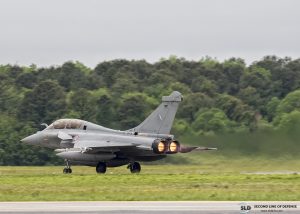 Dassualt Rafale of the Armée de l’air – French Air Force rotates from during Exercise Atlantic Trident ’17. Joint Base Langley-Eustis, VA. Credit: Todd Miller, Second Line of Defense
Dassualt Rafale of the Armée de l’air – French Air Force rotates from during Exercise Atlantic Trident ’17. Joint Base Langley-Eustis, VA. Credit: Todd Miller, Second Line of Defense
He emphasized that the Blue Force of F-22s, F-35s, Typhoons and Rafales forged new tactics and capabilities in defeating the Blue Force of an AWACS led large F-15 force with T-38s participating as well.
“To prepare for tomorrow’s threats, we are preparing for high intensity air operations.
“To do this we must achieve a maximum level of integration of aircraft of the 4th and 5th generations.
“We are working to combine the strengths of each aircraft and to make the best of its capabilities.”
The exercise “enhanced our knowledge of each other and provided the opportunity to develop new tactics.”
The FAF website noted: “the exercise was especially marked by the participation of F-35As from Eglin Air Base in Florida.
“After its IOC several months ago, the aircraft is seeing its capabilities grow.”
A sense of how the way ahead with 4th and 5th generation aircraft was provided by an RAF pilot who participated in Red Flag 17-1, which involved USAF, RAF and RAAF elements.
It is clear that the F-35 has already had a major impact on the thinking of operators and, in effect, Red Flag 17-1 saw the operators reshaping how the aircraft would work together in reshaping their operational rhythm in the combat space.
And as they did so, a way ahead in terms of Weaponization, C2 and related issues would be sorted out.
The F-35 has arrived and is reshaping concepts of operations as well as the operational restructuring of roles and mission responsibilities of other air combat assets.
With regard to the RAF, they are already shaping a new approach with regard to their Typhoons as they introduce F-35s into their force.
According to this pilot: “The Typhoon because of the performance of its defensive aids could operate in key areas to support F-35 operations along with the F-22.
“The specialized capabilities of the two aircraft in turn determined how they were used in the battlespace and the F-15 and Growlers were positioned appropriate to their missions and capabilities in the battlespace.
“A key question has been raised about how to handle C2 and weapons decisions across the battlespace.
“The Sentinel and the Wedgetail both operated to provide a quarterbacking role, but given the fidelity with which the F-35 can see the battlespace sorting out relationships among the various C2 element is part of shaping the way ahead.
“It was great to have guys sit back in the Wedgetail and able to process quite a lot of information and actually operating as mission commanders for dynamic targeting missions with a range of strike or jamming aircraft.”
“The Wedgetail both in terms of the systems and the operators was really first rate, indeed cutting edge. There is no way I would fly with an AWACS if I could fly with a Wedgetail.”
“A key challenge as we integrate various assets is how to ensure we know who can see what.
“As we introduce the F-35, the pilots have to adjust to the fact that their machines will see and convey data that they themselves are not looking at. And different airplanes will have different levels of SA in the battlespace. How to adjust the operation of the force to meet this challenge?”
Translations from the French by Second Line of Defense.
And photos in the two slideshows are credited to the FAF.
Editor’s Note: Also see the following piece by Todd Miller on Atlantic Trident 2017:
Reshaping Fighter Operations in the Air Combat Space: Atlantic Trident 2017


